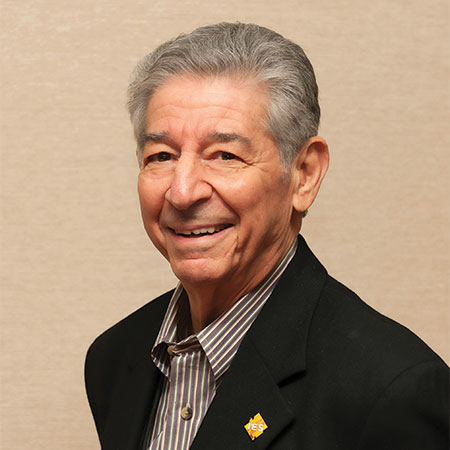California’s program for educating contractors could be a model for all
By Willard Warren
New technology in solid-state lighting has provided us with LEDs with higher lumens per watt efficacy than our legacy light sources, and they are now designated as the light source for calculating the illuminance levels in building spaces. Hence, the maximum allowable LPDs in recent energy codes have been reduced again. High-tech has also created connected lighting, where the ubiquitous lighting units have sensors embedded in them to allow us to measure and control not only the lighting but also the temperature, humidity, sound level, traffic of an area, and more. Also new is a building system called the Internet of Things (IoT), which can store the collected data on the Internet, and control many of a building’s systems with handheld monitors.
In addition, there’s been the emergence of a system called the Power over Ethernet (PoE), where low voltage, 48-V DC electrical devices are directly driven by the DC Power-generated and stored, when available, by renewable sources like solar panels and wind, more efficiently than with AC power. And PoE wiring can carry both power and communication simultaneously.
In the LD+A “Risky Business” article in July 2017, Tom Blewitt, director of principal engineers at UL, informed us that while connected lighting, IoT and PoE’s market penetration is only 1 percent, it is innovative, energy conserving and growing, but has some vulnerabilities. He warned that “The concern for lighting is that it is ubiquitous … and someone may use connected lighting products as a gateway to other systems, right on into secure building computers or secret information,” and the threat of stealing one person’s password could elevate to stealing 1,000 workers’ passwords. Standards regarding cybersecurity for connected lighting have just been initiated by ANSI, NEMA, UL’s 2900, NIST’s SP 800 and 1800 and DOE.
Since California is our most innovative energy conserving state, we asked Douglas Avery, formerly the lighting specialist at Southern California Edison, and co-founder and current co-chair of the California Advanced Lighting Control Training Program (CALCTP), to tell us what he’s innovated to protect the public in California from mistakes when planning to install and maintain a sophisticated lighting control system. Avery’s comments follow here:
“CALCTP was created as a result of many years of frustration with lighting control systems that were being installed incorrectly by building staffs that did not understand the technology, and as a result, building operators and owners concluded that the new technology was overpriced, did not work, and what’s more, did not deliver the savings or control of the building’s lighting system, as promised. In 2007, Southern California Edison (SCE) funded a research project entitled ”Two-way Connectivity with a Lighting System as a Demand Resource” to evaluate both the energy efficiency and demand response of three, off-the-shelf, advanced lighting control systems (ALCS).
“In January 2009 the utility published the SCE DR 07.04 Final Report. A troubling conclusion of this early study was the fact that all three of the contractors recommended by the participating manufacturers installed the control systems improperly, and all the years of problems incurred to get the sophisticated controls to work properly came into sharp focus. The problem was not with the controls, it was with the installation. The main takeaway from the SCE study was that an independent trained workforce is needed that is capable of installing, commissioning and operating an advanced lighting control system.
“A partnership was formed consisting of SoCal Edison (SCE), the California Lighting Technology Center at UC Davis, the National Electrical Contractors Association and the International Brotherhood of Electrical Workers to create two certification courses:
“1) “CALCTP Installer,” a rigorous training program for journey(men) level electricians that provides instruction on the design, installation and commissioning of advanced lighting control systems and
“2) “CALCTP Acceptance Tester,” a rigorous course for students that have at least three years of verifiable professional lighting controls experience. CALCTP acceptance testers are certified to conduct field testing of ALCS that are installed in retrofits, renovations and tenant improvements, as per California’s Title 24 Energy Code. CALCTP has expanded to four states and Canada, and is now identified as The National Advanced Lighting Controls Training Program (NALCTP). There are now a total of 4,634 certified installers and 1,672 certified acceptance testers.
“CALTCP is also working with the Electrical Training Institute (ETI) of Southern California to test and evaluate both CL and IoT products. The ETI is the site of the largest net-zero retrofitted facility in North America (http://nzp-eti.com), and has established a living lab that will be alpha testing a wide variety of CL and IoT technologies in partnership with major manufacturers. As these technologies become market ready, training in their installation and maintenance will be offered to apprentice and journeymen electricians and incorporated into the CALCTP and NALCTP continuing education programs. CALCTP’s objective is to have electrical contractors and their certified electricians own the new ALC systems for test, installation and maintenance.
LOCKED INTO ONE
There are as yet no standards for the interoperability of IoT and PoE systems among manufacturers comparable to those developed for fluorescent lamps the manufacturer of the initial control system equipment. It’s hard to believe, but there are some brand new start-up manufacturers of ALC systems that have the effrontery of offering 10-year warranties on their products. Furthermore, we read every day of instances where malware is jeopardizing the security of Internet data, so unless we follow CALCTP’s example and establish training programs for electrical contractors, installers and testers, and include cybersecurity, there’s no independent protection for users’ costly investment in advanced energy saving lighting and environmental control systems.


